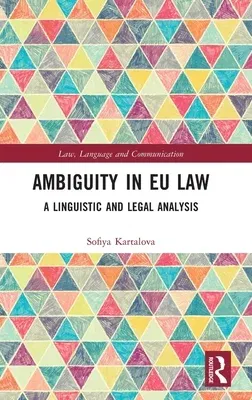Ambiguity - an expression or utterance giving rise to at least two
mutually exclusive interpretations - has been traditionally regarded as
an ever-present, and therefore trivial, feature of EU law, alongside
other forms of linguistic indeterminacy. At the same time, ambiguity has
been condemned as a perilous defect in the legal text, since it is
commonly assumed that the Court of Justice of the EU (CJEU) would
necessarily exploit it to engage in judicial activism. In contrast, more
recent theories present ambiguity as a means of promoting greater
acceptability and coherence, while trusting the CJEU's willingness to
exert judicial restraint for the benefit of judicial co-operation.
This ground-breaking work challenges some of the theoretical assumptions
about ambiguity in EU law and puts forward a more accurate and complete
theory about the CJEU's strategic use of ambiguity. Ambiguity is here
transformed from an underestimated or misunderstood detail of
undetermined significance to a desirable systemic feature of the EU
legal order with concrete properties and impact. Ambiguity as the
implicit basis of the CJEU's decision-making is shown to be
strategically valuable for the implementation of the authority of EU law
at some of the most pivotal moments in the evolution of the EU legal
order. This interdisciplinary investigation presents in-depth linguistic
and legal analysis of ambiguity found in the text of key provisions of
EU Treaties and in the language of some of the CJEU's leading
preliminary rulings in the area of fundamental rights, freedom of
movement and EU citizenship. The book suggests a categorisation of
examples, basic guidance about the type of case and situation where the
phenomenon is likely to emerge as well as an assessment of the
advantages and disadvantages of this unusual judicial technique.
The book will be a valuable resource for researchers and academics
working in the areas of Law and Language, Public International Law, EU
Law and Multilingualism.

